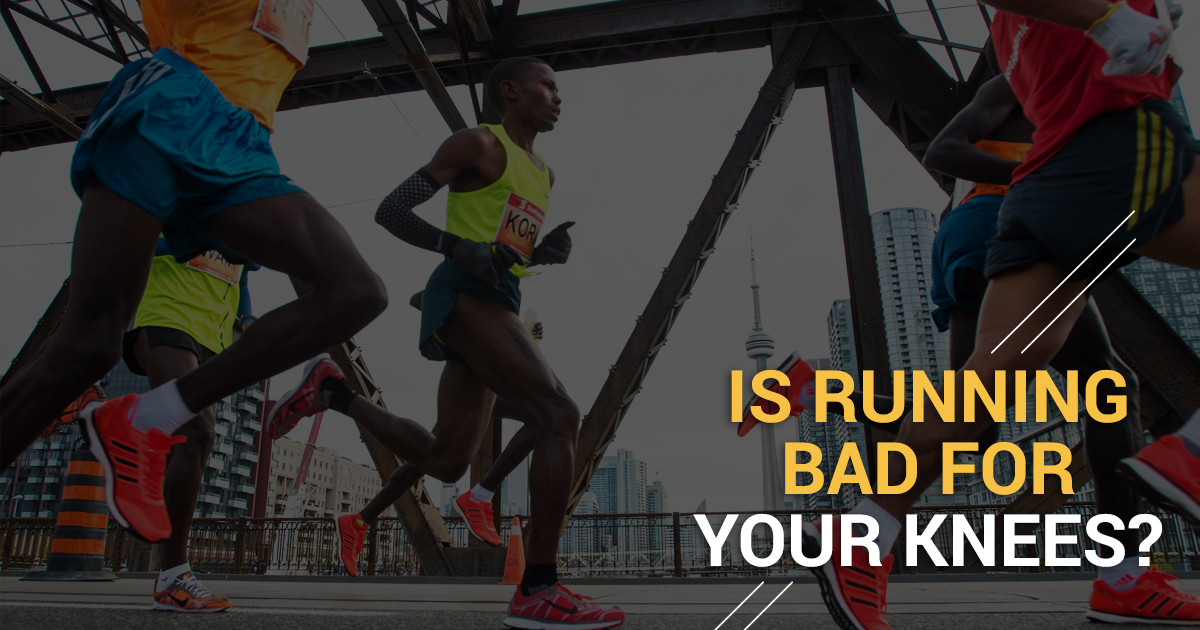
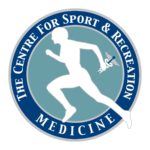 The Centre for Sport and Recreation Medicine has been a proud medical sponsor of the Scotiabank Toronto Waterfront Marathon for 15 years. We’ve had the privilege of helping many runners make it to the start line and watch thousands of runners cross the finish line every year. New this year, we’re partnering with Canada Running Series to provide a monthly blog to support runners preparing for the race. Whether this is your first 5K or your 50th marathon, we wish you well in reaching your goal!
The Centre for Sport and Recreation Medicine has been a proud medical sponsor of the Scotiabank Toronto Waterfront Marathon for 15 years. We’ve had the privilege of helping many runners make it to the start line and watch thousands of runners cross the finish line every year. New this year, we’re partnering with Canada Running Series to provide a monthly blog to support runners preparing for the race. Whether this is your first 5K or your 50th marathon, we wish you well in reaching your goal!
By: Alison Pinto, PT, FCAMPT, CAT(C)
Physiotherapist, Athletic Therapist
Good-intentioned people (typically non-runners) often advise runners to be wary of running so much because of the harm it will do to one’s knees. While it’s assumed that pounding the pavement also results in pounding the cartilage of the knees, eventually leading to arthritis, this is not the case. In a recent study comparing runners and non-runners, Lo et al. determined there was no increased risk of symptomatic arthritis in runners and that running does not appear to be detrimental to the knees. Similarly, Chakravarty et al. looked at x-rays for a group of long distance runners and non-runners over almost twenty years and determined that runners did not develop arthritis at an accelerated rate compared to non-runners. It’s believed that running could even be protective against arthritis since running assists in maintaining a healthy weight and keeps muscles strong, thereby decreasing load on the joints.
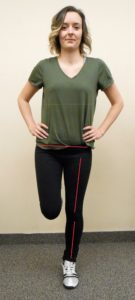
Strong Glut Medius – Proper alignment
That being said, knee pain in runners must be common enough to coin the term “runner’s knee”. This type of injury (also known as patellofemoral pain syndrome, or PFPS) is characterized by pain in the front of the knee around the knee cap. Pain usually occurs while bending the knee, such as squatting, going down stairs, or running. While the pain can be sharp and hinder day to day activities, this type of injury is usually the result of a muscle imbalance and not structural damage to the knee. Since running is a forward motion, runners tend to develop tightness in the muscles that move the hip in that direction, namely the iliopsoas (hip flexor) and tensor fascia lata. Conversely, muscles that control the lateral mobility of the hip (gluteus medius and mimimus) are underused and become weaker. However, those lateral muscles are important to stabilize the pelvis and knee while running.
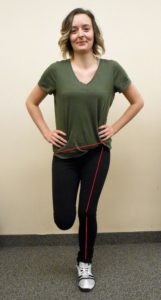
Weak Glut Medius- Leads to hip drop and knee collapse.
To test how strong your lateral muscles are, stand in front a mirror with your hands on the top of your hip bones. Now bend your right knee to lift the right foot off the ground. Ideally your hips should remain level and your knee should remain over the ankle
If your right hip dropped it indicates weakness in your left hip stabilizers. Hip drop leads to the knee collapsing inwards when all the weight is on that leg. As a result, the knee cap (patella) rubs against the ridges of the thigh bone (femur) instead of gliding smoothly in the groove. This leads to the sharp pain that is felt when bending the knee.
If you found that you were weak on one (or both) side, try this strengthening exercise:
- Lie on your side with hips and knees bent slightly. Ensure shoulders, hips and heels are all in a straight line.
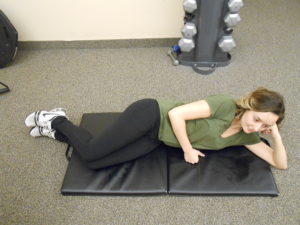
- Keeping the feet together, lift the top knee as high as possible without rotating backwards through the pelvis. Ensure you feel the muscles of the buttocks and not the front of the hip working.
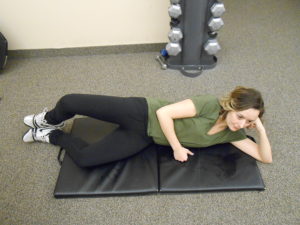
Repeat 3 sets of 10-15 reps, or as many as you can do with good form.
Don’t let runner’s knee hold you back. See one of our highly-trained therapists who can determine if you have any muscle imbalances which may be impacting your running. Visit our website at www.torontosportsmedicine.ca to book your appointment today.
References
Chakravarty, E. (August 2008). Long Distance Running and Knee Osteoarthritis: A prospective Study. American Journal of Preventative Medicine, 35(2), 133-138.
Lo, G. (February 2017). Is There an Association Between a History of Running and Symptomatic Knee Osteoarthritis? A Cross-Sectional Study From the Osteoarthritis Initiative. Arthritis Care & Research, 69(2), 183-191.







